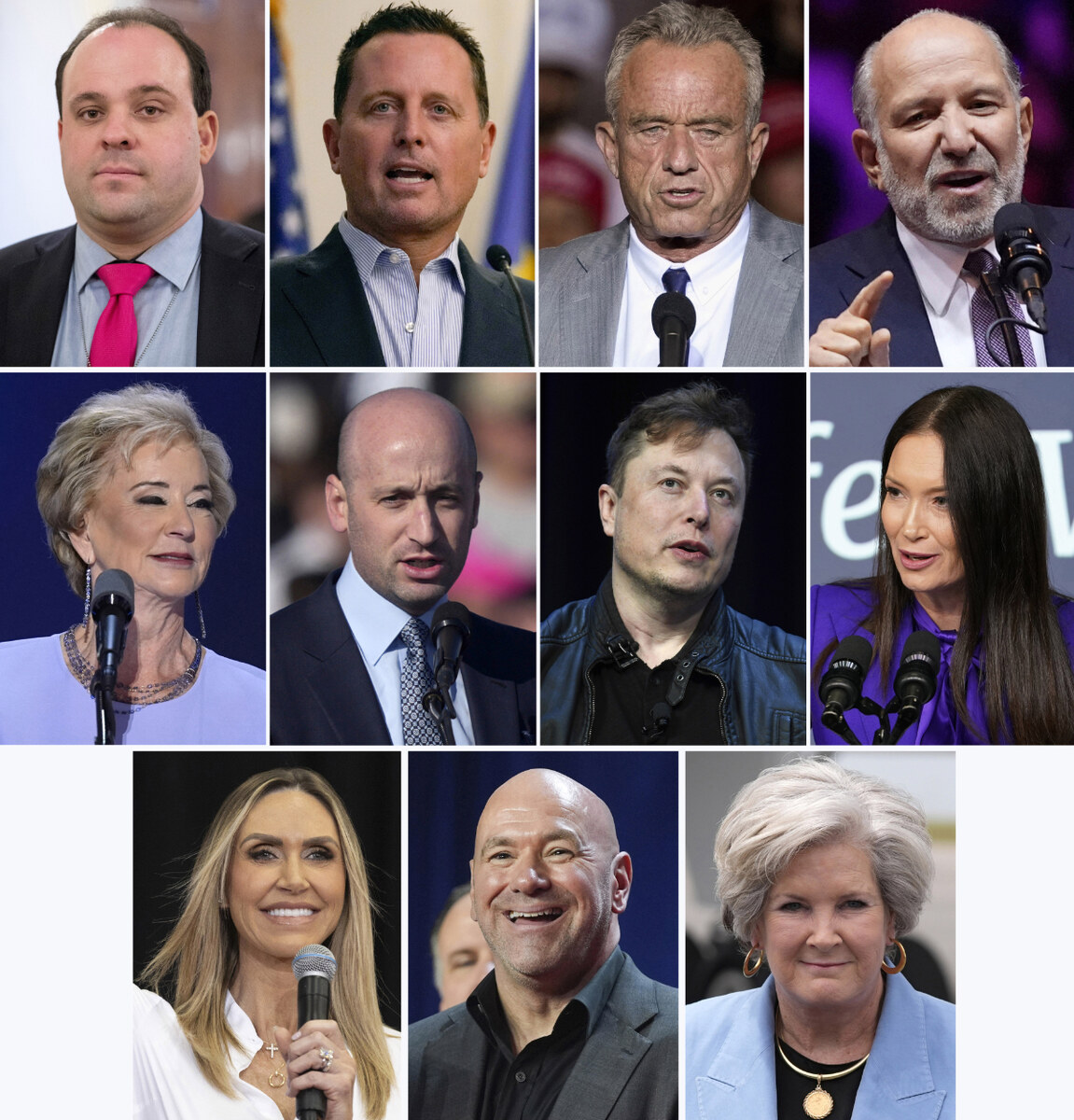WASHINGTON: Susie Wiles will be the latest occupant of the hottest hot seat in Washington — Donald Trump’s chief of staff.
It’s a tough job under the best of circumstances, responsible for networking with lawmakers, administration officials and outside groups while also keeping the White House running smoothly.
But it’s been particularly challenging under Trump, who has a history of resenting anyone who tries to impose order on his chaotic management style. Four people served as chief of staff during his first term, and sometimes things ended on acrimonious terms.

This combination photo of President-elect Donald Trump's longtime friends, aides and allies shows Boris Epshteyn, from top row left, Richard Grenell, Robert F. Kennedy Jr., Howard Lutnick, from center row left, Linda McMahon, Stephen Miller, Elon Musk, Brooke Rollins and from bottom row left Lara Trump, Dana White and Susie Wiles. (AP)
Will past be prologue? It’s impossible to know. So far, Wiles has fared better than most in Trump’s orbit, and she just steered his presidential campaign to victory.
Here’s a look at who came before her.
Reince Priebus
Priebus chaired the Republican National Committee while Trump ran for president in 2016, and he became Trump’s first chief of staff in the White House. Priebus was symbolic of the awkward alliance between the party establishment and Trump’s insurgency, and he struggled to balance the two.
The White House was plagued by infighting and failed to advance legislative goals such as repealing the Affordable Care Act. Priebus was sometimes viewed as untrustworthy by various factions vying for Trump’s favor. Anthony Scaramucci, who memorably but briefly served as Trump’s communications director, profanely attacked him for allegedly leaking information to the media.
Six months into his first term, Trump pushed out Priebus on July 28, 2017. The decision was announced on Twitter, which was par for the course in those tumultuous years.
John Kelly
Next up was Kelly, who had been Trump’s first Homeland Security secretary. Trump liked the way that Kelly, a former four-star Marine general who had served in Iraq, led his immigration crackdown.
But he soon became frustrated by Kelly’s attempts to impose military-style order on the chaotic White House. Kelly clashed with the president and some of his allies, ultimately becoming more isolated and less influential.
Trump appeared so eager to get rid of Kelly, he announced his departure on Dec. 8, 2018, without having a replacement lined up.
While Kelly served longer in the role than anyone else, his break with Trump was ultimately the most acrimonious. He described his former boss in acidic terms last month, saying Trump met the definition of a fascist and once praised Adolf Hitler as having done “some good things.”
Mick Mulvaney
It took days for Trump to settle on a replacement for Kelly, an unusual delay for a such a critical role. He chose Mulvaney, a former South Carolina congressman who was running the White House budget office at the time.
The decision came with an asterisk — Trump called Mulvaney his “acting” chief of staff, suggesting the position would be temporary.
Mulvaney abandoned Kelly’s strict management approach and decided to “let Trump be Trump.” Instead of managing the seemingly unmanageable president, Mulvaney focused on overseeing the staff and working with lawmakers.
He held the job for a little more than a year, departing on March 6, 2020, after Trump was acquitted in his first impeachment trial.
Mark Meadows
Trump turned to Meadows, a North Carolina congressman and leader of the right-wing House Freedom Caucus, to serve as his fourth chief of staff. It was a challenging time, with the coronavirus spreading in the United States and around the globe.
Long viewed as one of the roadblocks to congressional deal-making, Meadows played a leading role in negotiating pandemic relief legislation. He also proved himself as a loyalist as Trump was running for reelection against Joe Biden. Meadows oversaw a White House awash in conspiracy theories about voter fraud as Trump tried to overturn his defeat.
A former aide said Meadows frequently burned papers in his office fireplace during this time. Meadows refused to cooperate with a House committee investigating the Jan. 6 attack on the US Capitol, and he was indicted in election-related cases in Georgia and Arizona. He’s pleaded not guilty.




















